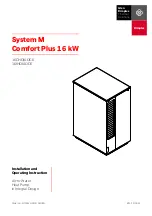
Cleanup
Special cleanup instructions for use with flammable
solvents:
• Always flush spray gun preferably outside and at least one
hose length from spray pump.
• If collecting flushed solvents in a one gallon metal
container, place it into an empty five gallon container, then
flush solvents.
• Area must be free of flammable vapors.
• Follow all cleanup instructions.
The sprayer, hose, and gun should be cleaned thoroughly
after daily use. Failure to do so permits material to build
up, seriously affecting the performance of the unit.
Always spray at minimum pressure with the gun nozzle tip
removed when using mineral spirits or any other solvent
to clean the sprayer, hose, or gun. Static electricity
buildup may result in a fire or explosion in the presence of
flammable vapors.
1. Follow the “Pressure Relief Procedure” found in the
Operation section of this manual.
2. Remove the gun tip and tip guard and clean with a brush
using the appropriate solvent.
3. Place the siphon tube into a container of the appropriate
solvent (refer to recommendations of the material
manufacturer). An example of the appropriate solvent is
water for latex paint.
4. Place the return hose into a metal waste container.
5. Move the PRIME/SPRAY valve to its PRIME position.
6. Move the engine ON/OFF switch to the ON position and
start the engine.
7. Turn on the sprayer by moving
the sprayer ON/OFF switch to
the ON position.
8. Slowly turn the pressure control
knob clockwise to increase the
pressure until fluid starts to
come out of the return hose.
9. Allow the solvent to circulate
through the sprayer and flush
the paint out of the return hose
into the metal waste container.
10. Turn the pressure control knob fully counterclockwise to
its lowest setting.
11. Turn off the sprayer by moving the ON/OFF switch to the
OFF position.
12. Move the PRIME/SPRAY valve to its SPRAY position.
13. Turn on the sprayer.
14. Turn the pressure control knob slowly clockwise to
increase pressure.
Ground the gun by holding it against the
edge of the metal container while
flushing. Failure to do so may lead to a
static electric discharge, which may cause a fire.
WARNING
Knob
Pressure
Control
Knob
Sprayer
ON/OFF
Switch
Switch
Sprayer
ON/OFF
Switch
NOTE: Hold the return hose in the waste container
when moving the PRIME/SPRAY valve to
PRIME in case the sprayer is pressurized.
WARNING
CAUTION
WARNING
© SprayTECH. All rights reserved.
7
15. Trigger the gun into the metal waste container until the
paint is flushed out of the hose and solvent is coming out
of the gun.
16. Continue to trigger the spray gun into the waste container
until the solvent coming out of the gun is clean.
17. Follow the “Pressure Relief Procedure” found in the
Operation section of this manual.
18. Store the sprayer in a clean, dry area.
Do not store the sprayer under pressure.
Cleaning the Spray Tip
1. Flush the gun with solvent immediately after the work is
completed.
2. Oil the sliding pins to prevent them from seizing up.
Should the spray tip become clogged, reverse
the spray tip with the lever and pull the trigger.
Once the obstruction comes out of the spray tip,
release the trigger, reverse the spray tip back to
the spray pattern setting, and resume spraying.
Do not attempt to clean the tip with your finger.
Do not use a needle or other sharp pointed instrument to
clean the tip. The hard tungsten carbide is brittle and can
be chipped.
Maintenance
Before proceeding, follow the Pressure Relief Procedure
outlined previously in this manual. Additionally, follow all
other warnings to reduce the risk of an injection injury,
injury from moving parts, or electric shock.
General Repair and Service Notes
The following tools are needed when repairing this sprayer:
Phillips screwdriver
3/8" hex wrench
needle-nose pliers
5/16" hex wrench
adjustable wrench
1/4" hex wrench
rubber mallet
3/16" hex wrench
flat-blade screwdriver
1/8” hex wrench
1/2” open-end wrench
7/8” open-end wrench
1. Before repairing any part of the sprayer, read the
instructions carefully, including all warnings.
Never pull on a wire to disconnect it. Pulling on a wire
could loosen the connector from the wire.
2. Test your repair before regular operation of the sprayer to
be sure that the problem is corrected. If the sprayer does
not operate properly, review the repair procedure to
determine if everything was done correctly. Refer to the
Troubleshooting section to help identify other possible
problems.
CAUTION
NOTE: All Honda engine work should be performed by
a Honda authorized service center.
WARNING
WARNING








































